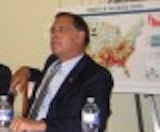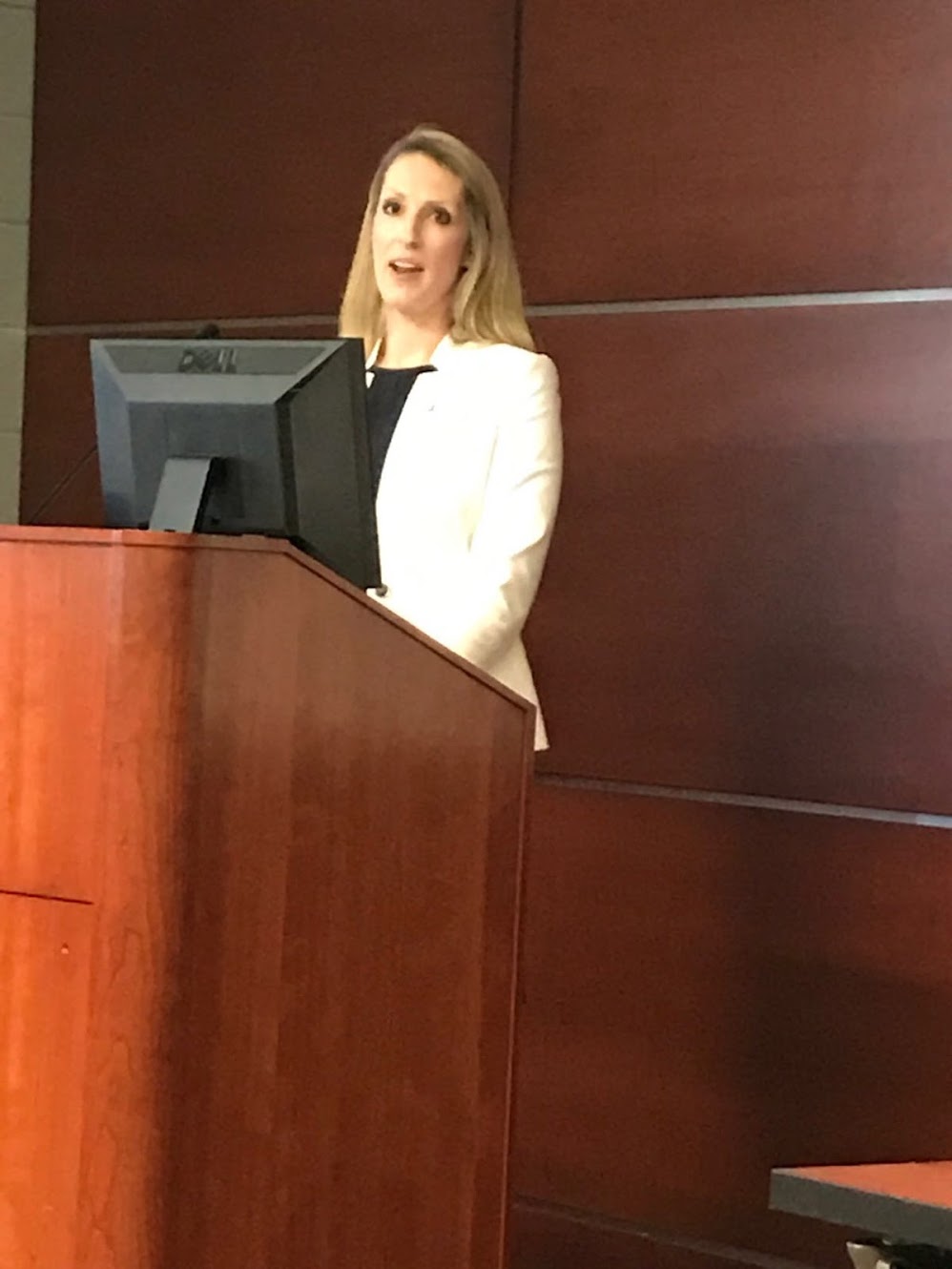Economic Equality Caucus
which advocates for economic equality across the USA.
| Home | Organizational Structure | State Coordinators | Executive Director | Caucus Articles | Memberships | |||||
| "Delta Vision, Delta Voices" | ||||||||||
|
Help Advocate for Economic Progress and Equality. Donate to the Delta Caucus/Economic Equality Caucus. |
||||||||||
Delta Grassroots Caucus Events

Credit Michael Hibblen/ KUAR News, Arkansas Public Radio; Former President Bill Clinton speaking to the Delta Grassroots Caucus on May 2, 2013, at the University of Arkansas Clinton School of Public Service, Little Rock

U. S. Senator John Boozman, Arkansas, at a Delta Grassroots Caucus meeting at the US Capitol

Brad Cole, Executive Director of the Municipal League of Illinois; previously a senior aide to former Republican US Sen. Mark Kirk of Illinois, earlier Mayor of Carbondale, Illinois, veteran Delta regional advocate, speaking at the Delta regional conference in West Memphis, Arkansas on April 26, 2019.

President Bill Clinton makes a comment to Delta Caucus Director Lee Powell at a meeting in Blytheville, Arkansas (in the northeast Arkansas Delta) on Nov. 2, 2014

The Delta Caucus would like to pay tribute to the late, great U.S. Sen. Thad Cochran of Mississippi, a powerful force in the US Senate for decades and a champion for the Delta. Sen. Cochran passed away on May 30, 2019. He spoke to the Delta Caucus on many occasions over the years (he is pictured above speaking to a Caucus event on Capitol Hill in Washington, DC) and his thoughtful, courteous and bipartisan leadership will be sorely missed.

Marcie Lawson, Executive Director, Sikeston, Missouri Regional Chamber and Area Economic Development Corporation, speaking at the Delta regional conference in West Memphis, Arkansas on April 26, 2019.

Alan Gumbel, Greater Memphis Alliance for a Competitive Workforce, Memphis, Tennessee, speaking at the Delta regional conference in West Memphis, Arkansas on April 26, 2019.

Mayor Shirley Washington of Pine Bluff, AR, speaking to the Delta Caucus at the Arkansas Capitol Rotunda in 2017.
Delta Suffers the Worst Poverty Rates in USA, US Census Bureau Figures Reveal
Posted on August 27, 2008 at 02:16 PM
The Delta fared very poorly in US Census Bureau statistics on poverty for the year 2007, as Mississippi, Louisiana and Arkansas were three of the four states with the worst poverty levels in America. Kentucky was fifth, Alabama sixth and Tennessee tenth, so that six of the Delta Regional Authority states unfortunately made the bottom ten of the worst poverty rates in our country. The federal poverty rate is $21,200 a year for a family of four.
Mississippi, Louisiana and Arkansas are the three states with the largest percentages of their populations in the DRA areas of their states, and poverty is significantly worse in the DRA sections of all the states than for the states as a whole. Mississippi had the highest poverty rate in the USA at 20.6%, with Louisiana second at 18.6% and Arkansas fourth at 17.9%.
The DRA areas are a smaller percentage in Kentucky, which was fifth at 17.3%, Alabama at sixth with 16.9%, and Tennessee at 15.9%.
The statistics for Mississippi, Louisiana, Arkansas, Kentucky and Alabama are particularly disturbing because these statistics are a year old and do not reflect the damage of the widening recession and the outrageously high gas prices. Unfortunately, whenever there is a national economic downturn the Delta suffers disproportionately. High energy prices in particular are disproportionately damaging for our region, because the Delta’s lower income people have to spend a higher percentage of their incomes for gas, while many of them have longer distances to travel in the vast rural region of the Delta.
ECONOMIC DECLINE FROM 2000 TO THE PRESENT: We have been going in the wrong direction economically since 2000. From 1997 to 2000, the poverty rate for the 240 counties of the DRA region (it was expanded a couple of months ago to 252 counties) decreased substantially from 18.4% to 16.6%. Unfortunately, that improvement was wiped out and the level worsened to 18.6% in 2004. The figures up to 2007 continue to look bad for the Delta, and sadly we know they will be even worse for 2008 with our current economic downturn.
Missouri at 21st and Illinois at 31st fared substantially better statewide, but the statistics for the DRA areas of these states do not accurately reflect conditions in the Delta because the 29 DRA counties in Missouri are relatively speaking a small part of the state, and southern Illinois is a tiny percentage of Illinois’ population. The Missouri Delta and southern Illinois have far higher poverty levels than the statewide figures for Missouri and Illinois.
The Delta region figures do not compare well with the national picture. Nationally, the number of people without health insurance fell by more than 1 million in 2007, the first annual decline since the Bush administration took office. Incomes edged up for the middle class while poverty held steady. But these figures only went as far as the end of last year, before the current economic downturn started gathering force. In looking at the national statistics, people should not be misled into thinking these figures are rosy. The Associated Press reported about the national picture that “Although there were some bright spots, it was a mixed picture. While the overall poverty rate held steady at 12.5 percent, poverty did rise among some groups. Latinos, children and the foreign-born — demographic categories that overlap considerably — experienced significant increases.” A poverty rate staying at the too high level of 12.5% is hardly a cause to celebrate nationally, and the Delta region is much worse.
These statistics should give us ammunition as we urge Congress and both Presidential campaigns to do more for the Delta region. Among actions that ought to be taken are:
- passing expanded renewable energy to combat our dependence on foreign oil;
- job creation policies and initiatives to revive the economy, extend the New Markets Tax Credit, Renewal Communities, expand the Earned Income Tax Credit, and promote entrepreneurialism and Small Business Administration aid to the small businesses that are major engines of job growth;
- provide greater health care access for underserved areas in the Delta;
- bring educational opportunity in our region up to the national norm with reforms of No Child Left Behind and greater federal aid to higher education;
- complete Interstate 69 and the Delta Development Highway system;
- continue to provide greater federal aid for the deteriorating housing market;
- pass a major expansion of the Delta Regional Authority budget–the Senate Appropriations Committee took a notable step in that direction by passing an increase from President Bush’s $6 million request up to $20 million. The final vote will take place after the election but we need to keep reminding them about the need for a much larger DRA budget.
Nationally, while the number of uninsured dropped to 45.7 million, down from 47 million in 2006, it was largely because more people were covered through government programs. For the middle class, the median — or midpoint — household income rose to $50,233, a modest increase of $665 from the previous year, although it was the third consecutive annual rise. The Economic Policy Institute in Washington stated that “The median household is no better off now than they were back in 2000, despite their deep contribution to the nation’s economic growth during this period.”
For example, after adjusting for inflation, last year’s median household income of $50,233 was not significantly different from the figure for 2000, which was $50,557.
If the national scene looks weak, the Delta states were much worse. A greater percentage of Arkansans were living in poverty last year than in 2001. More Arkansans lack health insurance and the average income of working-age households in Arkansas is still among the country’s lowest.
Among rural counties, St. Landry Parish in the Louisiana Delta had the highest poverty in America at 32.8%.
In 2007, median household income ranged from $68,080 for Maryland to $36,338 for Mississippi.
We need to redouble our efforts to impress upon the powers that be that the vast Mississippi Delta region from southern Illinois to New Orleans and eastward to the Alabama Black Belt is falling further and further behind the rest of America. They ought to hear our voices and act to do something about it. Thanks very much and keep contacting your Congressional offices and the Presidential campaigns about the plight of our region. Lee Riley Powell, executive director, Mississippi Delta Grassroots Caucus (202) 360-6347
Back to the top